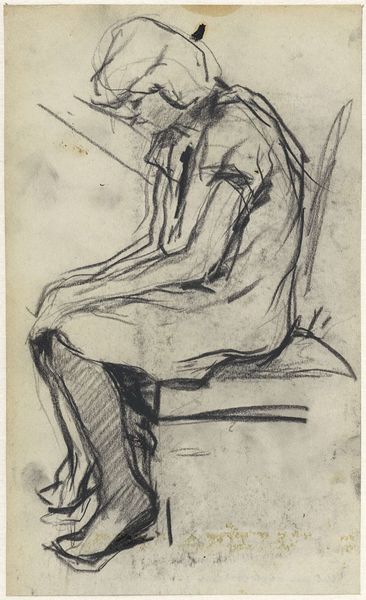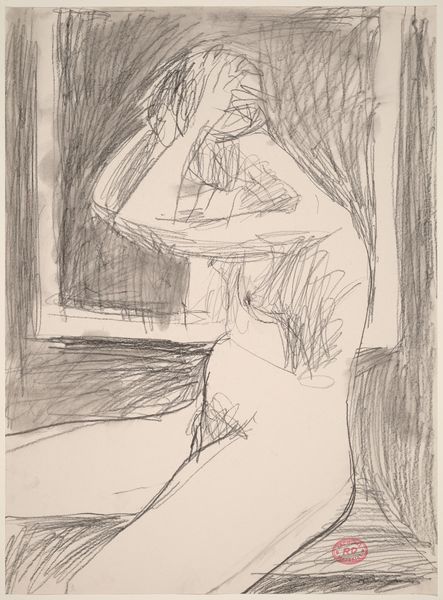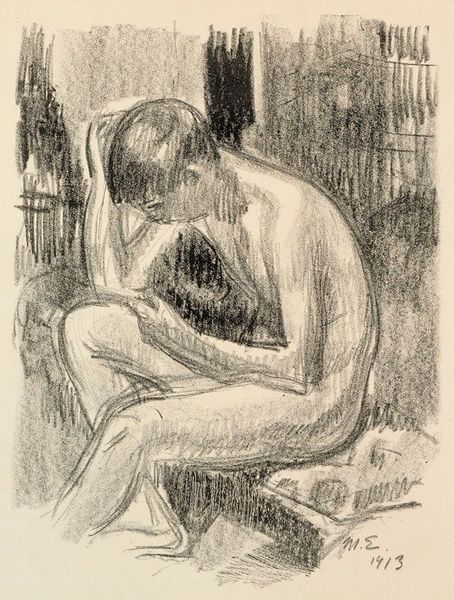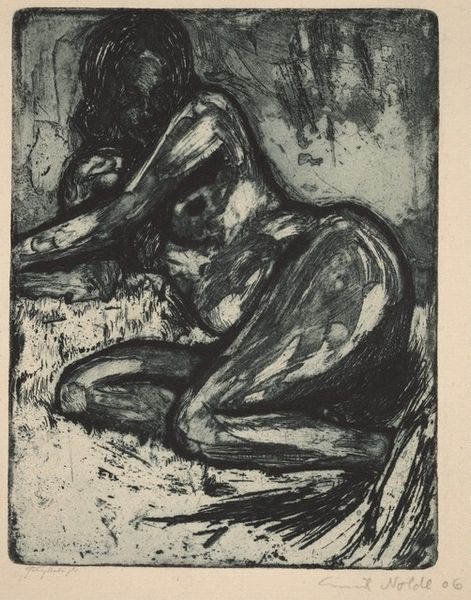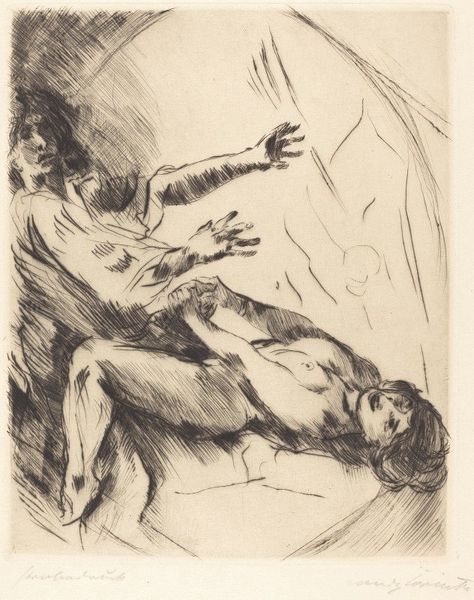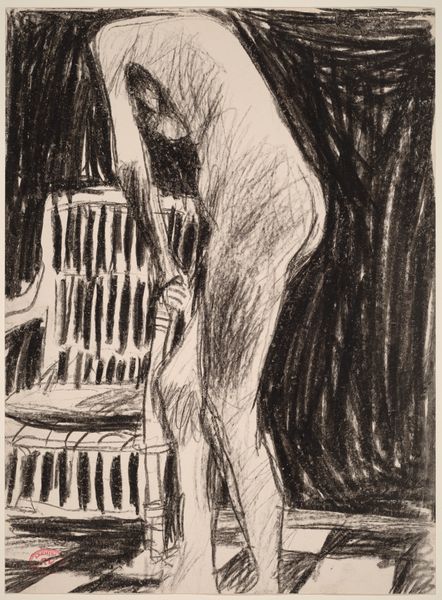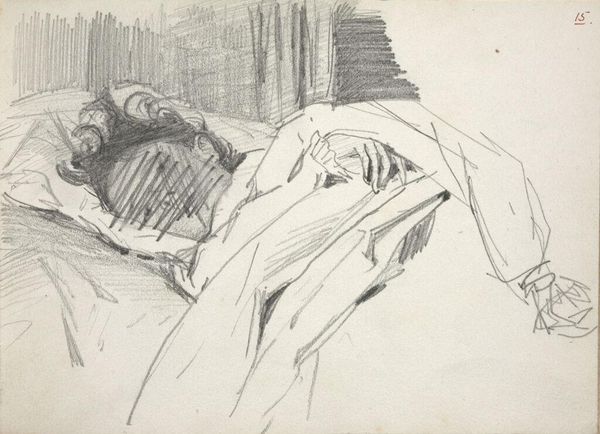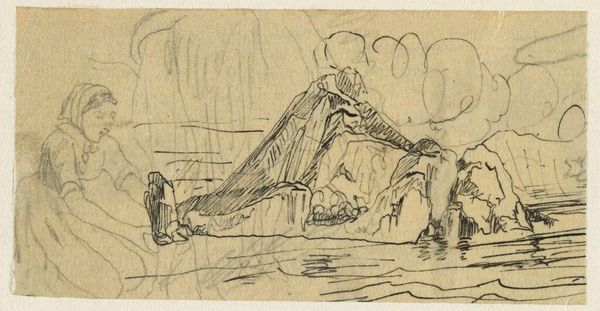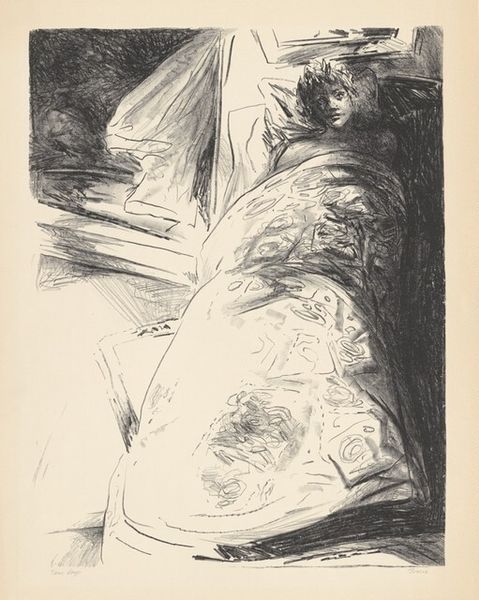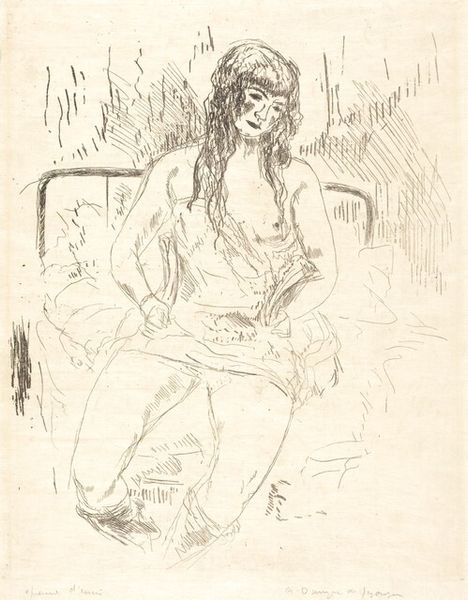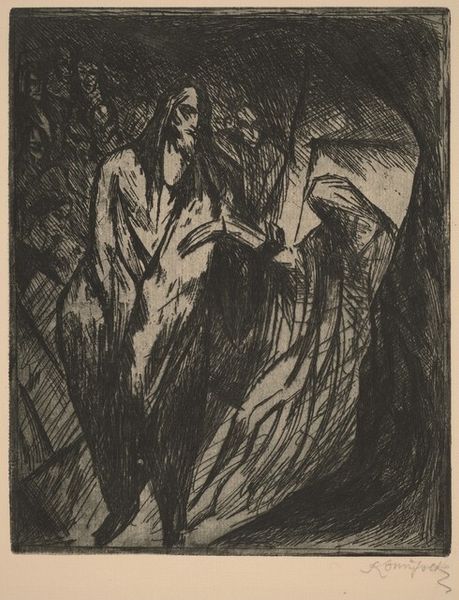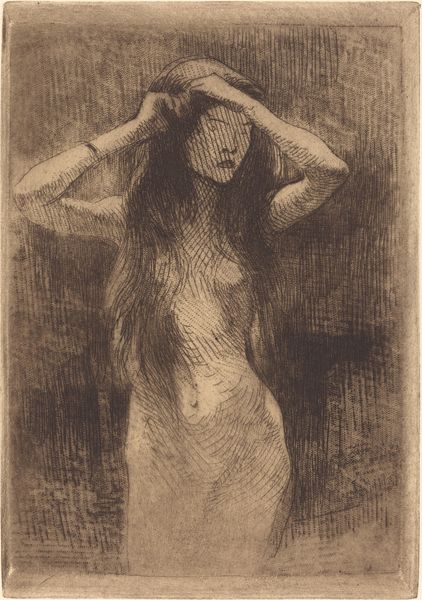
The Prostitute Returns Worn Out to Bubu (La fille publique rentre epuisee pres de Bub c. 1927 - 1929
0:00
0:00
drawing, print, ink
#
portrait
#
drawing
#
comic strip sketch
#
ink drawing
# print
#
pen illustration
#
pen sketch
#
figuration
#
ink line art
#
linework heavy
#
ink
#
sketchwork
#
ink drawing experimentation
#
pen-ink sketch
#
genre-painting
#
modernism
#
erotic-art
#
initial sketch
Copyright: National Gallery of Art: CC0 1.0
Curator: This evocative image, created between 1927 and 1929, is titled "The Prostitute Returns Worn Out to Bubu," crafted by André Dunoyer de Segonzac. It's an ink drawing, existing also as a print. The scene is stark, almost aggressively raw. Editor: Immediately, I'm struck by the immediacy of it. It’s not pretty. There’s an honesty, or perhaps a performance of honesty, in the hurried, frantic linework. What are we seeing here, material-wise? Curator: De Segonzac seems to be evoking a very specific archetype, a recurring figure of weary disillusionment and, perhaps, exploitation. Consider how that reflects contemporary views on class, gender, and the changing social fabric. This kind of representation also goes way back, though… Editor: Ink's directness serves that disillusionment so well. Think of the price point – ink was readily available, affordable, not some grand artistic indulgence. This suggests a broader dissemination of such imagery, impacting popular visual culture and even informing ideas about how sexuality and labor were perceived among diverse viewers. It brings a sense of urgency… what stories do you read in this image, thinking of that archetypal "worn-out" figure? Curator: The symbolism is inescapable. The hunched posture, the shadowed face obscured by tangled hair, all signal despair and alienation. I wonder about Bubu, whoever, or whatever, that might signify. This return to Bubu might speak of a cyclical struggle. Perhaps a personal hell? The heavy lines contribute to an atmosphere of oppressive emotional weight… It certainly plays into anxieties around work, and even shame… Editor: And what a clever touch to put an untouched drink in the scene! Note the composition: it pulls you through this bedroom with very deliberate placements – from the iron bed, a sort of machine aesthetic grounding this space, to the woman herself, slumped in her undergarments, down to the tall boots still clinging to her legs – such a narrative packed into one print with little flourish! It invites considerations on the artist’s means: How efficiently is the print manufactured? How many might exist? And for whom? The ink speaks to production at speed. It emphasizes the circulation and consumption of these themes of moral distress within culture. Curator: An efficient cycle of production mirroring, perhaps, the character's cyclical return to "Bubu," that space of refuge, exhaustion, and unavoidable routine… It leaves me pondering how symbols endure. Editor: Exactly! The image, in its immediacy, feels like something spat from a machine. This exploration has broadened my thoughts, so interesting!
Comments
No comments
Be the first to comment and join the conversation on the ultimate creative platform.
